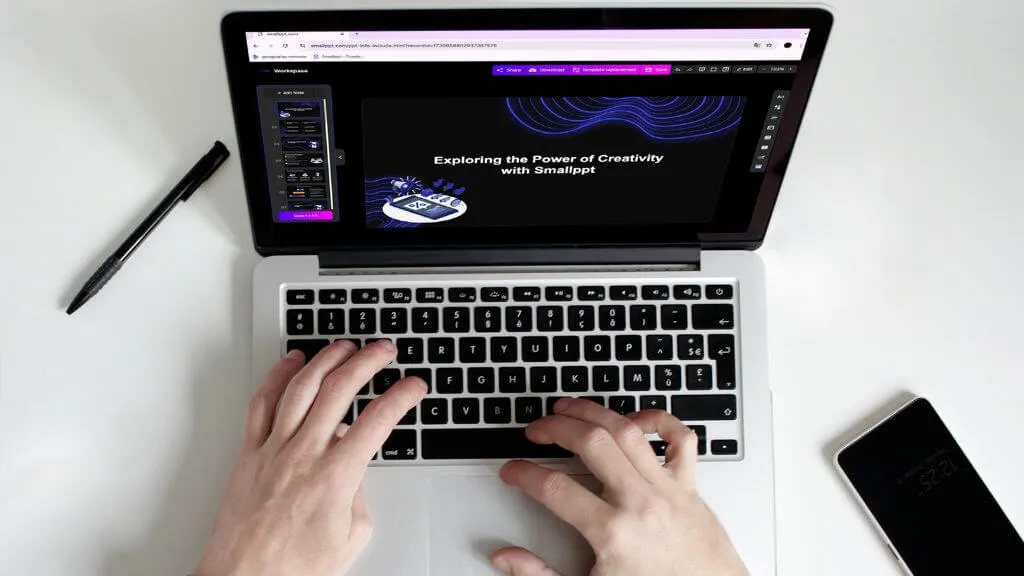
Introduction – The Deadline Dash
It’s 11:47 p.m. Your lab report is finally done, but the professor also wants a 10-slide presentation by 8 a.m. You have two options: pull an all-nighter wrestling with PowerPoint, or let AI turn your finished document into a polished deck before midnight coffee gets cold. “From Docs to Decks” is the student-first platform that does exactly that—upload any Word, PDF, Google Doc or even a photo of handwritten notes and receive an academic-grade slide show in under 90 seconds. Below, we break down how the magic works, why it earns straight A’s from freshmen to PhD candidates, and the exact clicks you need tonight to reclaim your sleep.
The Student Pain Point
A 2023 Educause study found that 74 % of undergraduates list “slide creation” as their most stressful coursework task—outranking even exams. Why? Because the average student juggles five classes, part-time jobs, and campus life. Manually extracting key points, designing visuals, and formatting citations can devour six precious hours that could be spent studying, networking, or simply decompressing. “From Docs to Decks” compresses those six hours into six clicks.
Supported Inputs – Anything You Already Have
1.Microsoft Word (.docx)
2.Google Docs (share link)
3.PDF lecture notes or e-textbook chapters
4.Scanned JPEG/PNG of handwritten summaries
5.CSV lab data or survey results
6.Short audio recap recorded on your phone
OCR and speech-to-text run server-side, so even a blurry photo of last week’s whiteboard brainstorm is fair game.

AI Pipeline Built for Academia
1.Semantic Parser – identifies Introduction, Methods, Results, Discussion (IMRaD) or any custom headings.
2.Citation Extractor – spots APA, MLA, Chicago references and ports them into slide footnotes.
3.Chart Generator – converts raw numbers into bar graphs, line charts, or pie visuals color-coded to your school palette.
4.Visual Mapper – pairs concepts with 1.2 million royalty-free icons and images cleared for academic use.
5.Layout Optimizer – chooses between single-column, two-column, or timeline layouts based on content length and visual balance.
The output is an editable PowerPoint or Google Slides file, complete with speaker notes and a slide-by-slide rehearsal timer.
Step-by-Step Workflow (90-Second Cycle)
Step 1 – Drag & Drop
Upload your document. The dashboard auto-detects word count, language, and reading level.
Step 2 – Select Course Template
Browse 500+ templates filtered by subject: Biology Lab, History Thesis, Marketing Case, Engineering Capstone. Each template is pre-loaded with color-blind-safe palettes and WCAG-compliant fonts.
Step 3 – Toggle Extras
• Include References – auto-creates end-slide bibliography.
• Add Speaker Notes – AI writes concise 60-word cues for each slide.
• Interactive Poll – embeds live Mentimeter questions for Q&A sessions.
Step 4 – Generate & Review
Click “Create.” Typical metrics:
• 2,000-word essay → 12 slides in 38 seconds.
• 5-page PDF → 9 slides in 29 seconds.
• 15-row CSV → 6 data-visual slides in 45 seconds.
Review inline; change any chart color or swap an icon with a single click.
Step 5 – Export & Present
Download PPTX, open in Google Slides, or share a live link with group-mates. AI tracks real-time edits and merges changes automatically.
Deep-Dive Features Students Love
APA/MLA Auto-Citations
Every statistic is footnoted; clicking the citation jumps to the reference slide formatted in your chosen style.
Smart Chart Builder
Upload a CSV of lab absorbance values and receive a best-fit line graph with R², axis labels and error bars.
Voice-to-Slides
Record a 60-second recap on your walk back from class; the engine transcribes, summarizes and produces three visual slides ready for tomorrow’s peer review.
Collaboration Layer
Share the deck link; classmates can leave comments or request “more visuals” via an AI chat panel. Changes sync like Google Docs.
Accessibility First
• Alt-text for every image (<125 characters).
• High-contrast themes for lecture-hall projectors.
• Keyboard-only navigation for mobility-impaired presenters.
Security & Privacy
• SOC 2 Type II and FERPA compliant.
• Files encrypted at rest; auto-purged after 30 days unless saved to your private workspace.
• No data sold to third parties or used to train external models.

Real-World Wins
Freshman Biology
Sarah uploaded her 1,500-word photosynthesis lab report at 10:30 p.m. and had a 10-slide deck ready by 10:32. She scored 98 % and used the extra two hours to rehearse.
Graduate Seminar
Marcus fed the platform a 40-page thesis chapter and received a 15-slide summary for his conference submission. Reviewers praised the “crystal-clear visuals.”
Group Project
Five engineering seniors shared a Google Doc with 8,000 words. The AI split it into 20 slides and color-coded each author’s contributions, cutting coordination time by 70 %.
Pricing – Built for Student Budgets
• Free: 3 decks/month, up to 10 slides each, small watermark.
• Student Pro: $4.99/month, unlimited slides, APA/MLA/Chicago citations, priority GPU.
• Semester Pass: $19.99/four months, includes plagiarism scan and cloud storage.
• Campus License: Departments can bulk-purchase seats at $2/user/month.
Integrations & LMS Plugins
• Canvas, Blackboard, Moodle – one-click export to assignment folders.
• Google Drive – auto-save new decks to a “Presentations” folder.
• Microsoft 365 – open directly in PowerPoint with live chart links.
• Notion – embed interactive deck previews inside study dashboards.
Future Roadmap
• AR Mode – project slides into 3D space for immersive capstone defenses.
• AI Tutor – voice-coach that scores pace, filler words and eye contact via webcam.
• Flashcard Generator – auto-create Anki cards from the key points of each slide.
Conclusion – Reclaim Your Night, Own Your Morning
From late-night lab reports to last-minute thesis defenses, “From Docs to Decks” turns academic overload into academic excellence. Upload your document, pick a template, and present with confidence—all before the dorm lights dim. Because your ideas deserve the spotlight, not the formatting grind.


